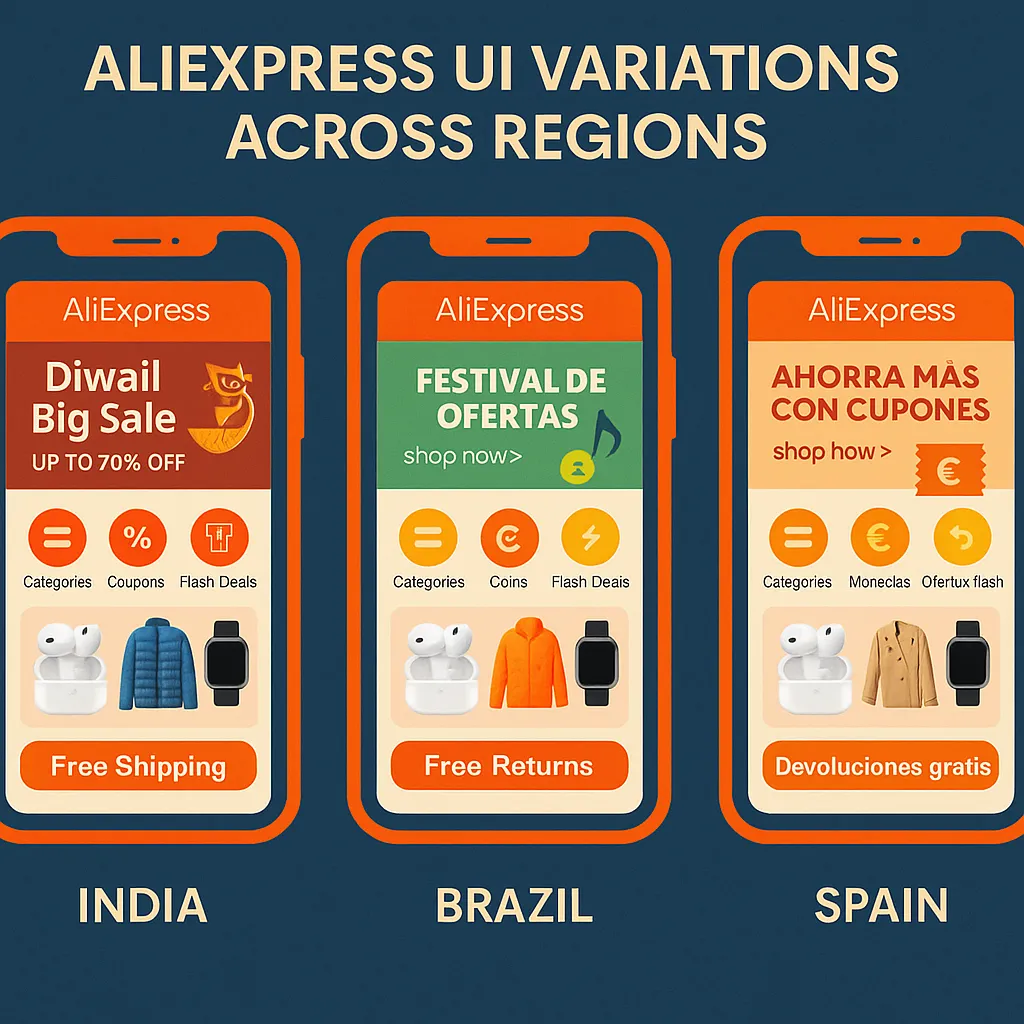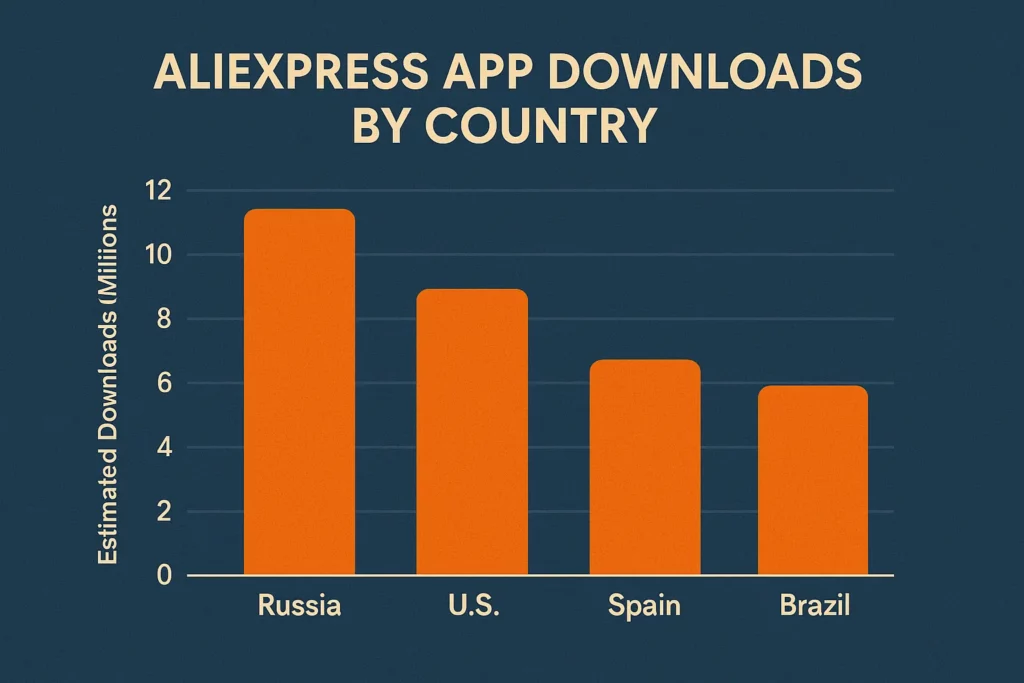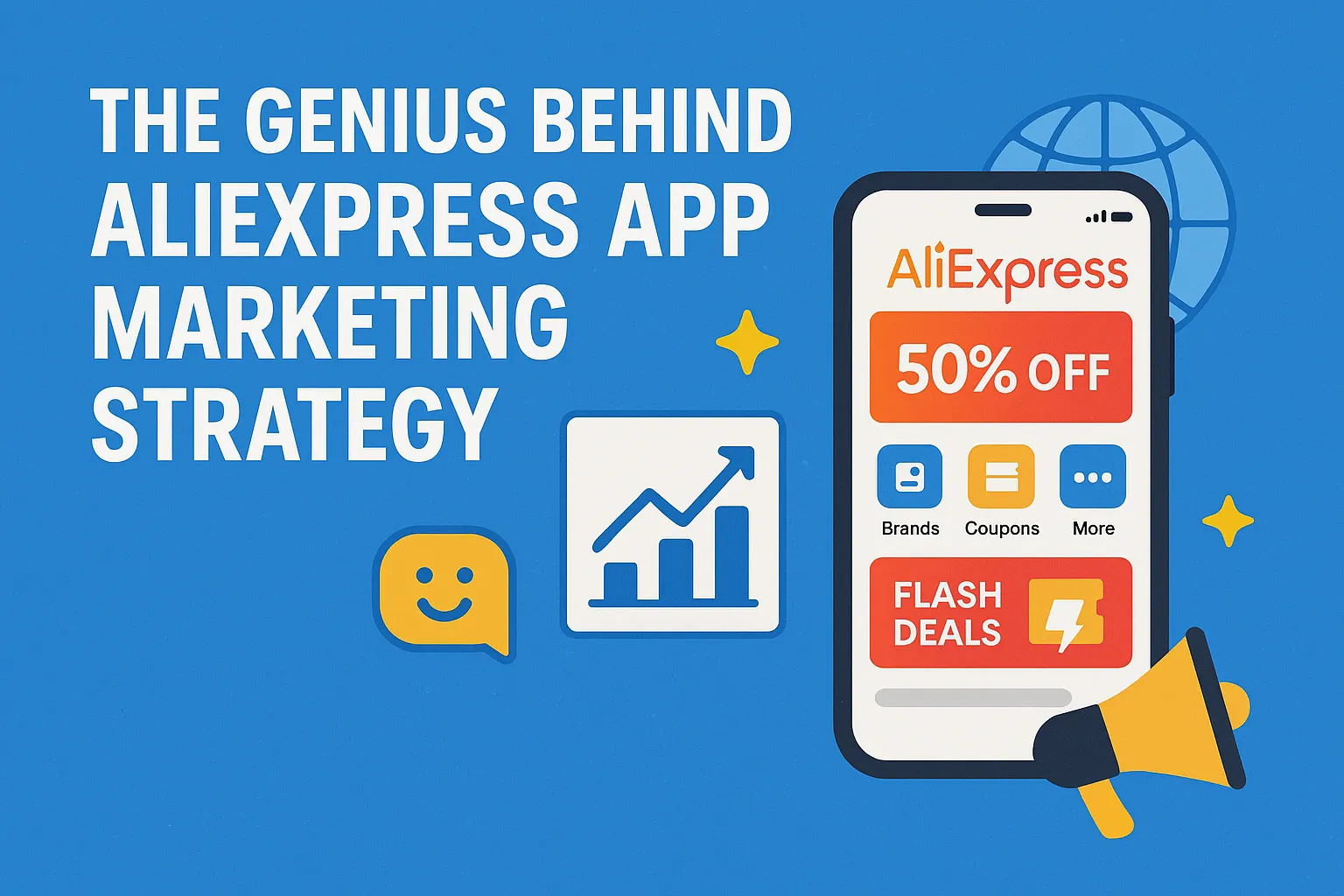AliExpress app displayed on a smartphone with marketing icons, graph, chat bubble, and megaphone on a vibrant blue background.The Genius Behind AliExpress App Marketing Strategy
Once upon a scroll, you opened AliExpress to check a smartwatch. Two hours later, your cart is full of phone cases, LED string lights, and a suspiciously cheap drone. Sound familiar? That’s not an accident—it’s AliExpress’s add-to-cart gorcery in action. And if you’re a startup building the next eCom disruptor, there’s gold in that playbook.
For creators and founders, AliExpress isn’t just a platform—it’s a psychology lab with a checkout button. They’ve nailed conversion-focused UX, influencer-fueled trust loops, and gamified promotions so addictive you forget you even clicked. We’re breaking down exactly how they do it—and how your app can swipe those tactics (ethically, of course).
And hey, if you’re thinking about launching an AliExpress clone and how it works but don’t want to spend three years and ten devs figuring it out—Miracuves has your back.

What Makes AliExpress App Marketing So Dangerous (in a Good Way)
1. Global Appeal, Local Vibe
AliExpress didn’t target just one country—it targeted everyone. But here’s the kicker: they didn’t blast generic campaigns. They localized the experience—from currency to language, shipping options to seasonal deals.
In India, it shows Diwali bundles. In Brazil, it promotes Carnival fashion. The marketing translation goes way beyond words—it’s about cultural fluency. Your clone app? Better start learning the local lingo of your audience, fast.
2. The UX That Makes You Browse for Hours
AliExpress’s interface is chaos in harmony—infinite scrolls, flash deals, daily coins, trending tabs, mystery boxes. It should be overwhelming, but it’s oddly addictive. Why? Because it’s designed to feel like winning.
Swipe, spin, scratch—AliExpress gamifies everything from logging in to leaving a review. Their marketing doesn’t stop at the ad click; it lives inside the app.
3. Influencers Drive the Engine
AliExpress doesn’t just pay influencers—they turn them into sellers. Through affiliate programs and direct partnerships, they empower micro-creators to plug products, run live streams, and create DIY shopping content.
In fact, some TikTok creators earn a full income just showcasing trending AliExpress finds. It’s the classic “show, don’t tell” tactic—except the showing is the selling.
4. Crazy-Effective Personalization (Powered by AI)
Open the app, and it’s like it knows you. It recommends exactly what you didn’t know you wanted. That’s AliExpress’s AI-driven recommendation engine, constantly refining based on your behavior—browsing, pausing, wishlist adds, even scroll speed.
They combine behavioral data with marketplace-level trends to surface relevant deals before users even search.
According to Statista, AliExpress sees over 180 million monthly visitors globally—AI personalization is what keeps them coming back.
5. Shoppertainment: Where Shopping Becomes Content
AliExpress figured out early that Gen Z and Millennials don’t just shop—they want a show. Enter: shoppertainment. Live product unboxings, funny reviews, trending TikTok challenges—all tied to real product links.
It’s retail meets reality TV, optimized for virality. And this content isn’t tucked away—it’s front and center in their in-app feed.
6. Time-Limited Urgency = Daily Logins
AliExpress weaponizes FOMO like a pro. Daily coupons, “Buy in 2 minutes to get 15% off,” or “Only 3 left at this price”—their entire app is a limited-time offer generator.
This keeps users logging in daily, and guess what? That triggers more app engagement and push notifications = more conversions.
Lessons for Entrepreneurs: Marketing Your Own AliExpress-Style App
1. Stop Marketing Features, Start Marketing Feelings
AliExpress doesn’t sell you a pair of shoes. It sells you the thrill of snagging a deal. Design your marketing to tap into emotions—urgency, delight, trust, curiosity—not just product specs.
2. Think Global, Act Hyperlocal
Launch with market-specific campaigns. Work with local influencers. Use regional events (like Ramadan, Singles’ Day, Diwali) as marketing leverage. Your users should feel like the app was built just for them.
3. Gamify the Boring Stuff
From reviews to referrals, inject micro-incentives. Offer badges, cashback, spins. Small dopamine hits = high engagement.
4. Don’t Sleep on User-Generated Content
Encourage users to post reviews with photos or short clips. Reward them. Feature them. Let your community market for you. It builds credibility faster than any ad ever will.
How to Build Your Own AliExpress Clone with Miracuves

Conclusion
AliExpress isn’t magic—it’s marketing science mixed with relentless UX testing and audience empathy. If you’re dreaming of building your own shopping app empire, there’s no better case study than this digital mall on steroids.
At Miracuves, we help innovators launch high-performance app clones that are fast, scalable, and monetization-ready. Ready to turn your idea into reality? Let’s build together.
FAQs
How does AliExpress attract new users?
Through influencer marketing, viral content, affiliate programs, and location-specific promotions tailored for different countries.
What role does gamification play in their strategy?
It keeps users engaged with daily tasks, spins, and discounts—boosting retention and repeat usage.
Is live commerce effective?
Absolutely! AliExpress uses live shopping streams to humanize products and drive FOMO-based purchases.
How does AliExpress personalize user experience?
They use AI and behavioral analytics to recommend highly relevant products and time-sensitive deals to each user.
Can small startups use this marketing model?
Yes, with scaled-down versions—start with referral programs, UGC, and creator partnerships to build traction.
What’s the best way to launch an AliExpress clone?
Use a white-label or custom solution with proven UI/UX principles, and partner with a team like Miracuves for faster go-to-market.








